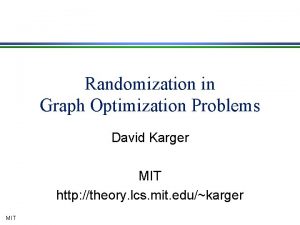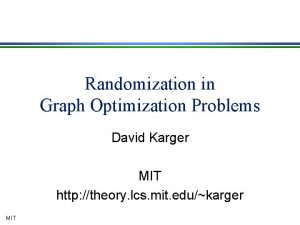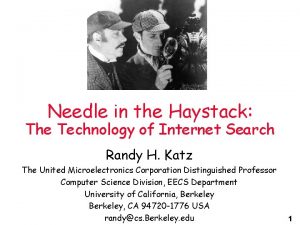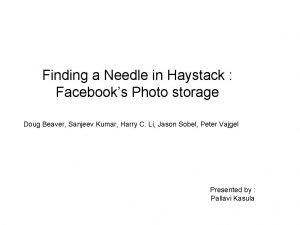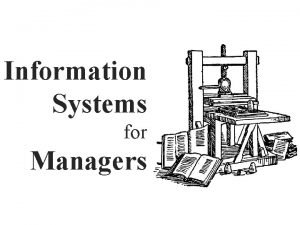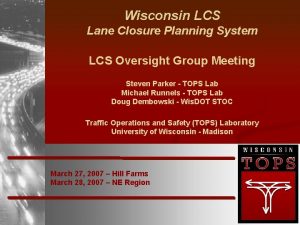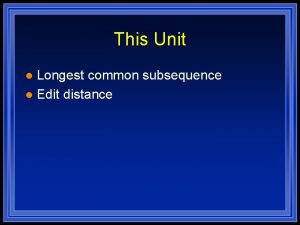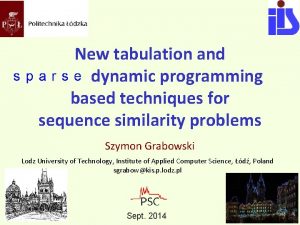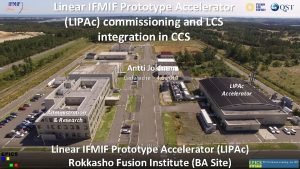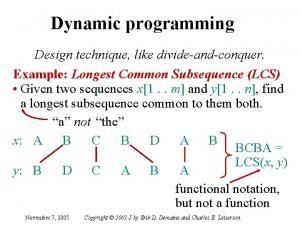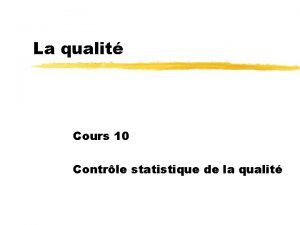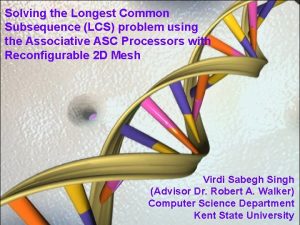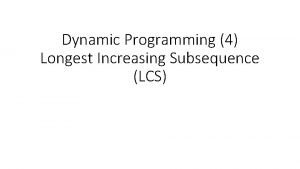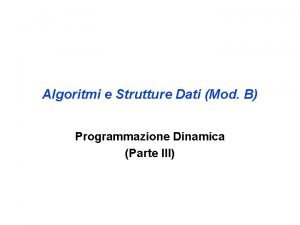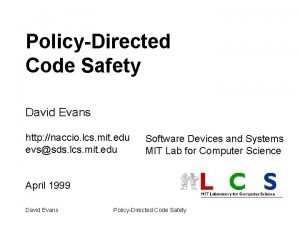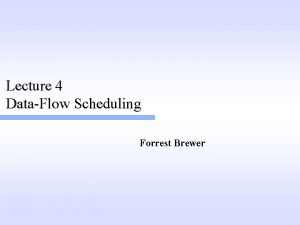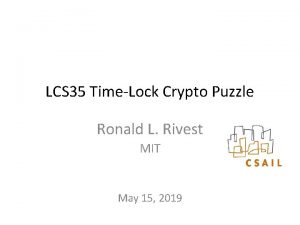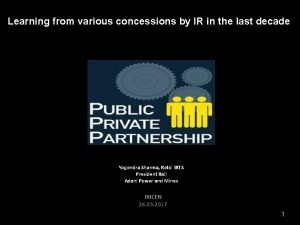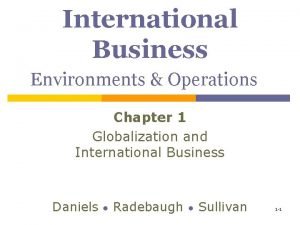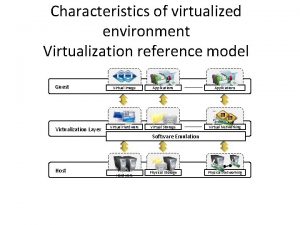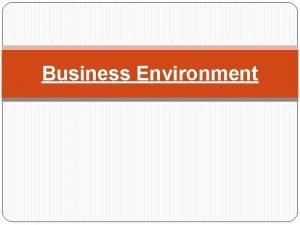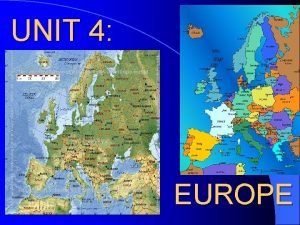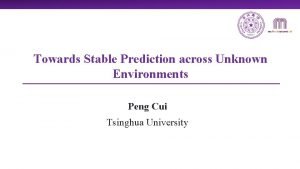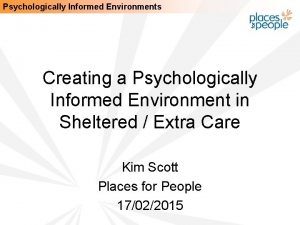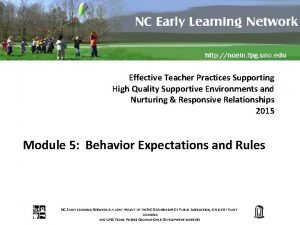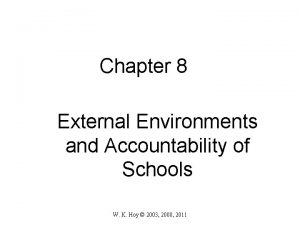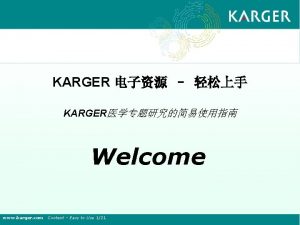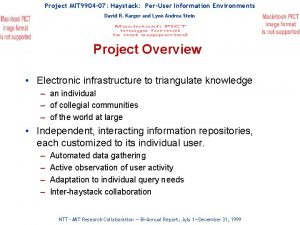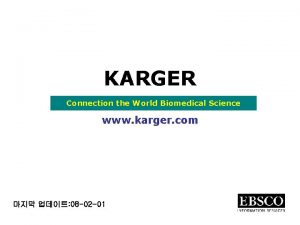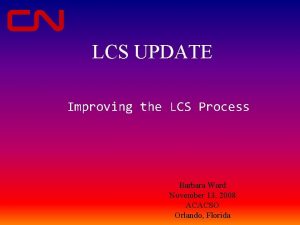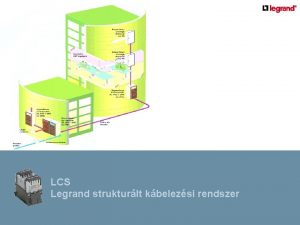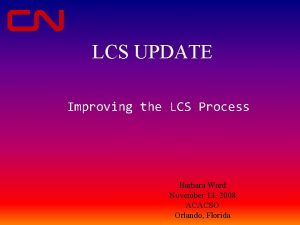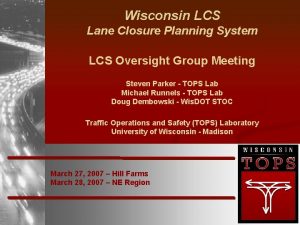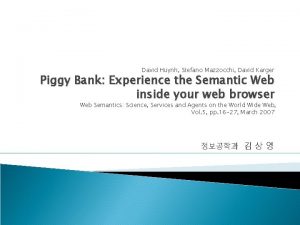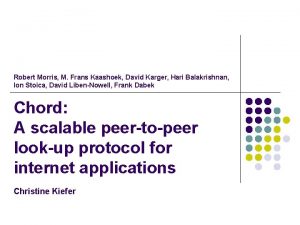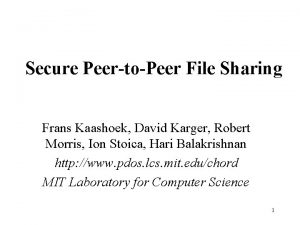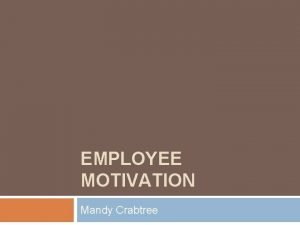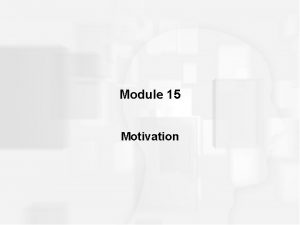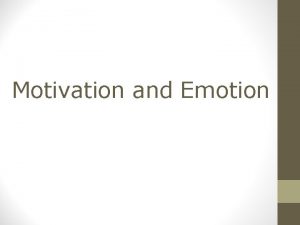Haystack PerUser Information Environments David Karger LCS Motivation

































- Slides: 33

Haystack: Per-User Information Environments David Karger LCS

Motivation LCS

Individualized Information Retrieval • One size does NOT fit all – Library is to bookshelf as google is to …. • Best IR tools must adapt to their individual users – – Hold content that is appropriate to that user Organize it to help that user navigate and organize it Adapt over time to how that user wants things done Like a bookshelf, or a personal secretary David Karger — MIT Laboratory for Computer Science and Artificial Intelligence Laboratory

Haystack Approach • Data Model – Define a rich data model that lets user represent all interesting info – Rich search capabilities – Machine readable so that agents can augment/share/exchange info • User Interface – Strengthen UI tools to show rich data model to user – And let them navigate/manipulate it • Adaptability – People are lazy, unwilling to “waste time” telling system what to do, even if it could help them later – System must introspect about user actions, deduce user needs and preferences, and self-adjuss to provide better behavior David Karger — MIT Laboratory for Computer Science and Artificial Intelligence Laboratory

Data Model A semantic web of information LCS

The Haystack Data Model • W 3 C RDF/DAML standard • Arbitrary objects, connected by named links e HTML Doc title Haystack – User extensible – Add annotations – Create brand new attributes y it l a qu say s Outstanding David Karger — MIT Laboratory for Computer Science and Artificial Intelligence Laboratory author – A semantic web – Links can be linked • No fixed schema typ D. Karger

Agent Environment • Various types rooted in RDF containers – Extract structured data from traditional formats – Extend RDF through analysis/integration of other RDF – Take actions (notify user gui, fetch web info, send email) • Various Triggers – Scheduled actions – Actions triggered by arrival/creation of new RDF patterns • Belief Server – Agents will disagree – User specifies which are more trustworthy – Belief server filters each disagreement • User is ultimate arbiter (via user interface) David Karger — MIT Laboratory for Computer Science and Artificial Intelligence Laboratory

Database Needs • Power – Support general purpose SQL-style queries over arbitrary RDF • Speed – Haystack stores all state in data model – So issues huge number of tiny, trivial queries to model – Traditional databases assume real work of query will dominate intialization/marshalling costs – So traditional databases don’t work for haystack • Wanted: all-in-one data repository David Karger — MIT Laboratory for Computer Science and Artificial Intelligence Laboratory

Gathering Data • Active user input – Interfaces let user add data, note relationships • Mining data from prior data – Plug-in services opportunistically extract data • Passive observation of user – Plug-ins to other interfaces record user actions • Other Users David Karger — MIT Laboratory for Computer Science and Artificial Intelligence Laboratory

Data Extraction Services Machine Learning Services Spider RDF Store Web Observer Proxy Mail Observer Proxy David Karger — MIT Laboratory for Computer Science and Artificial Intelligence Laboratory Haystack UI Web Viewer

User Interface Uniform Access to All Information LCS

Current Barriers to Information Flow • Partitions by Location – Some data on this computer, some on that – Remote access always noticeable, distracting • Partitions by Application – Mail reader for this, web browser for that, text editor for those – Todo list, but without needed elements • Invisibility – Where did I put that file? – Tendency for objects to have single (inappropriate) location (folder) • Missing attributes – Too lazy to add keywords that would aid searching later David Karger — MIT Laboratory for Computer Science and Artificial Intelligence Laboratory

Goal: Task-Based Interface • When working on X, all information relevant to X (and no other) should be at my fingertips – Planning the day: todo list, news articles, urgent email, seminars – Editing a paper: relevant citations, email from coauthors, prior versions – Hacking: code modules, documentation, working notes, email threads • Location, source and format of data irrelevant David Karger — MIT Laboratory for Computer Science and Artificial Intelligence Laboratory

Sign of Need: Email Usage • Email as todo list – Anything not yet “done” kept there – Reminder email to ourselves – Single interface containing numerous document types • Overflowing Inboxes – Navigate only by brute-force scanning – Unsafe file/categorize anything: out of sight, out of mind David Karger — MIT Laboratory for Computer Science and Artificial Intelligence Laboratory

Options • Folders – Out of sight, out of mind – Still need applications to see data – Which is the right folder? • Desktops – Allow arbitrary data types – But coupling between applications & data types too light – A smear of many tasks, so hard to focus * Hundreds of icons, tens of windows, huge menus * No partitioning • RDF (our choice) – Treat information uniformly – Let each information object present itself in contect David Karger — MIT Laboratory for Computer Science and Artificial Intelligence Laboratory

The Big Picture David Karger — MIT Laboratory for Computer Science and Artificial Intelligence Laboratory

User Interface Architecture • Views: Data about how to display data • Views are persistent, manipulable data View 2 UI data Mapping 2 Data to be displayed Underlying information David Karger — MIT Laboratory for Computer Science and Artificial Intelligence Laboratory

Semantic User Interface • Present information by assembling different views together • Information manipulation decoupled from presentation – Lower barrier of entry for View for Favorites collection development – New data types can be added without designing new UIs • Uniform support for features like context menus – Actions apply to objects on screen in various “roles” – E. g. as word, as name of mail message, as member of collection David Karger — MIT Laboratory for Computer Science and Artificial Intelligence Laboratory View for cnn. com View for yahoo. com View for ~/documents/thesis. pdf

David Karger — MIT Laboratory for Computer Science and Artificial Intelligence Laboratory

Tasks Become Modeless Data David Karger — MIT Laboratory for Computer Science and Artificial Intelligence Laboratory

Persistence of Views • Views are data like all other data • Stored persistently, manipulated by user • User can customize a view – View for particular task can be cloned from another – Can evolve over time to need of task – To an extent previously limited to sophisticated UI designer • Views can be shared (future work) – Once someone determines “right” way to look at data, others can benefit David Karger — MIT Laboratory for Computer Science and Artificial Intelligence Laboratory

Adaptation Learning from the User over Time (Future Work) LCS

Approach • Haystack is ideally positioned to adapt to user – RDF data model provides rich attribute set for learning – In particular, can record user actions with information * (which flexible UI can capture) – Extensive record can be built up over time • Introspect on that information – Make Haystack adapt to needs, skills, and preferences of that user David Karger — MIT Laboratory for Computer Science and Artificial Intelligence Laboratory

Observe User • Instrument all interfaces, report user actions to haystack – Mail sent, files edited, web pages browsed • Discover quality – What does the user visit often? • Discover semantic relationships – What gets used at the same time? • Discover search intent – Which results were actually used? David Karger — MIT Laboratory for Computer Science and Artificial Intelligence Laboratory

Learning from Queries • Searching involves a dialogue – First query doesn’t work – So look at the results, change the query – Iterate till home in on desired results • Haystack remembers the dialogue – instead of first query attempt, use last one – record items user picked as good matches – on future, similar searches, have better query plus examples to compare to candidate results – Use data to modify queries to big search engines, filter results coming back David Karger — MIT Laboratory for Computer Science and Artificial Intelligence Laboratory

Mediation • Haystack can be a lens for viewing data from the rest of the world – Stored content shows what user knows/likes – Selectively spider “good” sites – Filter results coming back * Compare to objects user has liked in the past – Can learn over time • Example - personalized news service David Karger — MIT Laboratory for Computer Science and Artificial Intelligence Laboratory

News Service David Karger — MIT Laboratory for Computer Science and Artificial Intelligence Laboratory

News Service • Scavenges articles from your favorite news sources – Html parsing/extracting services • Over time, learns types of articles that interest you – Prioritizes those for display • Uses attributes other than article content – Current system based entirely on URL of story David Karger — MIT Laboratory for Computer Science and Artificial Intelligence Laboratory

Personalized News Service David Karger — MIT Laboratory for Computer Science and Artificial Intelligence Laboratory

Underway Projects • Mail Auto-classifier • Generalized querying/relevance feedback based on Haystack’s rich attribute set David Karger — MIT Laboratory for Computer Science and Artificial Intelligence Laboratory

Collaboration Haystack’s Ulterior Motive LCS

Hidden Knowledge • People know a lot that they are – Willing to share – But too lazy to publish • Haystack passively collects that knowledge – Without interfering with user • Once there, share it! – RDF---uniform language for data exchange • Challenges – As people individualize systems, semantics diverge – Who is the “expert” on a topic? (collaborative filtering) David Karger — MIT Laboratory for Computer Science and Artificial Intelligence Laboratory

Example • Info on probabilistic models in data mining – My haystack doesn’t know, but “probability” is in lots of email I got from Tommi Jaakola – Tommi told his haystack that “Bayesian” refers to “probability models” – Tommi has read several papers on Bayesian methods in data mining – Some are by Daphne Koller – I read/liked other work by Koller – My Haystack queries “Daphne Koller Bayes” on Yahoo – Tommi’s haystack can rank the results for me… David Karger — MIT Laboratory for Computer Science and Artificial Intelligence Laboratory
 David karger mit
David karger mit David karger mit
David karger mit David karger mit
David karger mit Needle in a haystack game
Needle in a haystack game Number of cells
Number of cells Haystack storage
Haystack storage Implations
Implations Wisconsin lcs
Wisconsin lcs Lcs example
Lcs example Tabulation dynamic programming
Tabulation dynamic programming Lcs xi
Lcs xi Lcs
Lcs Lcs example
Lcs example Lcs adalah pemeriksaan
Lcs adalah pemeriksaan Lci lcs
Lci lcs Lcs solver
Lcs solver Lcs dp
Lcs dp Algoritmo lcs
Algoritmo lcs Fooji lcs code
Fooji lcs code Lcs scheudle
Lcs scheudle The mit cryptographic 'time-lock' puzzle
The mit cryptographic 'time-lock' puzzle Lanfh
Lanfh Nikhil gandhi pipavav
Nikhil gandhi pipavav The widening set of interdependent relationships
The widening set of interdependent relationships Discuss machine reference model of execution virtualization
Discuss machine reference model of execution virtualization Components of business environment
Components of business environment Chapter 13 natural environments of europe
Chapter 13 natural environments of europe Peng cui tsinghua
Peng cui tsinghua Psychologically informed environments
Psychologically informed environments Psychologically informed environments
Psychologically informed environments Creating supportive environments smoking
Creating supportive environments smoking High quality supportive environments
High quality supportive environments External environments and accountability of schools
External environments and accountability of schools Example of model-based agent
Example of model-based agent

